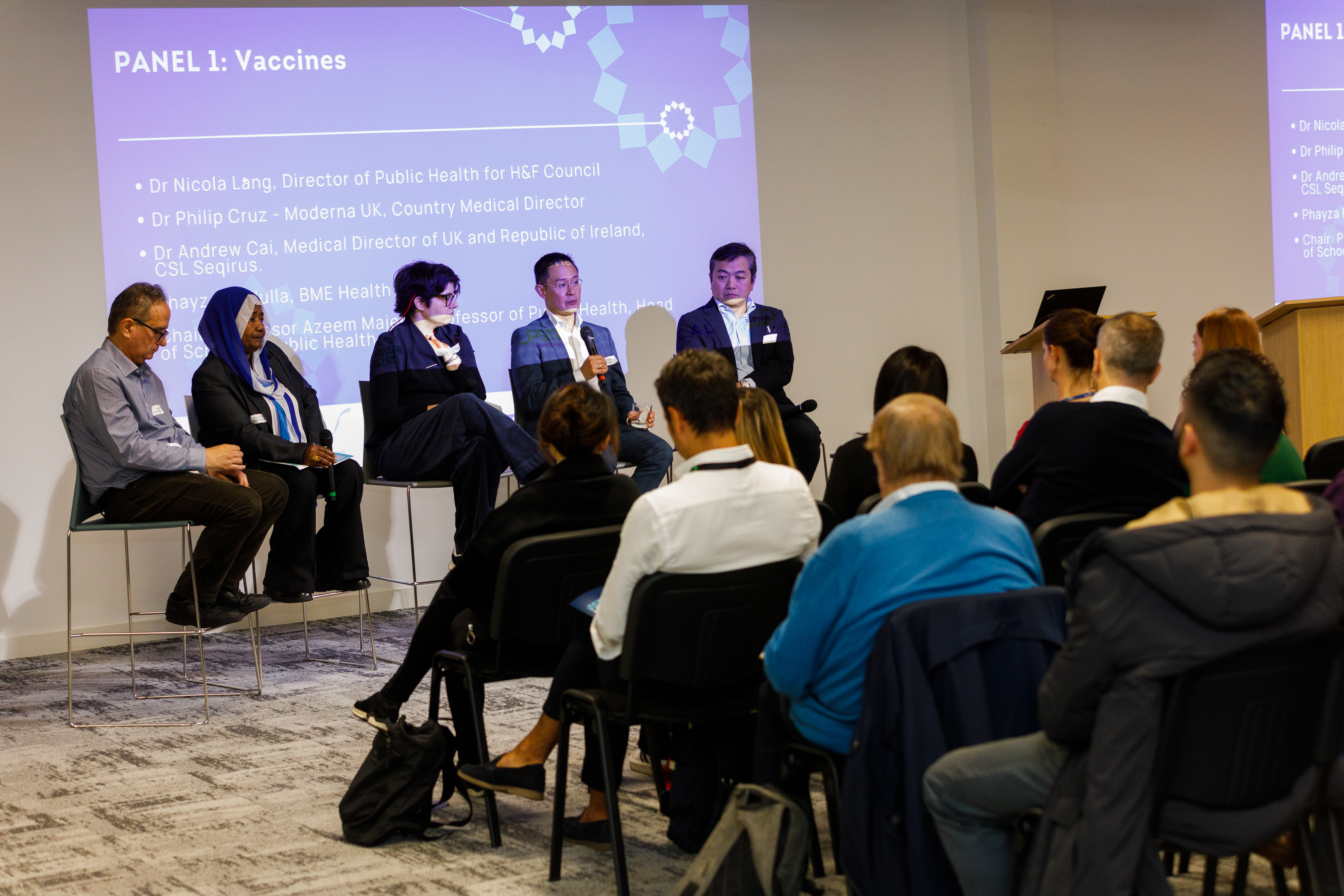Vaccines in the Fridge: 6 lessons on building trust
“Vaccines do not work. Vaccination does. If a vaccine sits in a fridge on a shelf, it will not exert what it’s intended to do”
COVID has demonstrated that -as a society- we are getting really good at making vaccines, and fast – yet we can get unstuck at the last hurdle, getting vaccines from fridges to arms. This first panel at Jawdrop Fireside on 25 September 2024 looked at vaccine hesitancy, and what can be done to counteract it.

Setting the scene: vaccine uptake has been going down in the last decade. The hesitancy is more prevalent within disadvantaged communities. Apart from the 3% of staunch anti-vaxers who will not budge, there is a group of 15-20% of the population who could be convinced to get vaccinated: but how? The good news is that progress can and is being made, the bad news is that there is no silver bullet. Building trust with disaffected or disengaged communities is a multi-layered, multi-stakeholder, multi-pronged action. Here’s what some of these prongs look like..
- Better education: sometimes the problem is as simple as education “I didn’t know that vaccines are safe” because no one told me, or didn’t tell me in my language: cue information and patient-support leaflets in native languages. Sometimes the scepticism can be more nuanced or steeped into cultural sensitivities (presence of animal gelatine in vaccines). Sometimes – paradoxically- the lowest vaccine uptake is present amongst the people who should have the most faith in medicine: healthcare professionals. In all cases, the answer is to work with these groups individually, allowing the time to listen to their concerns, understand and remove the hurdles and provide reassurance.
- The return of the medical leader: the effective disappearance of GPs as central figures that were trusted by the population, creates a leadership void which misinformation can fill. But how do we go back? If we can’t get more GPs, maybe we should share their load with community pharmacists and better empower them to build a trusted relationship with their patients.
- Better access to vaccines: there’s an argument where the problem is not vaccine hesitancy but logistical difficulty in accessing vaccines. When the COVID vaccine was administered the principle was to make it as easy as possible for everyone to get it (including drop-ins, buses driving to remote locations etc)- and the uptake was very high.
- Creative approaches: whether it’s by considering non-conventional places for vaccines to be administered (Mosques) or by driving buses full of vaccines to the more inaccessible locations, creative approaches can pay off. That said, the demand has to be there in the first place, and better logistics are no substitute for better education.
- Targeting through data: thanks to COVID, we have data on the groups with low vaccine intake, so it makes sense to target these specific groups with tailored initiatives.
- Social listening: it’s easy to stigmatise social media as the source of all misinformation, however monitoring the social media discourse – something that can be done effectively through AI- can be useful to identify the root cause of mistrust (what are the real concerns around vaccines) as well as counter the misinformation on the same channels that propagate it.
Written by: Cat Rigoni

